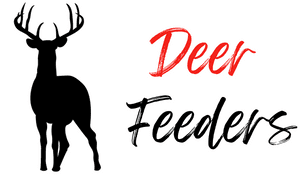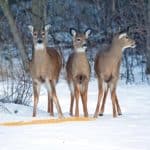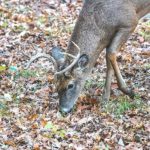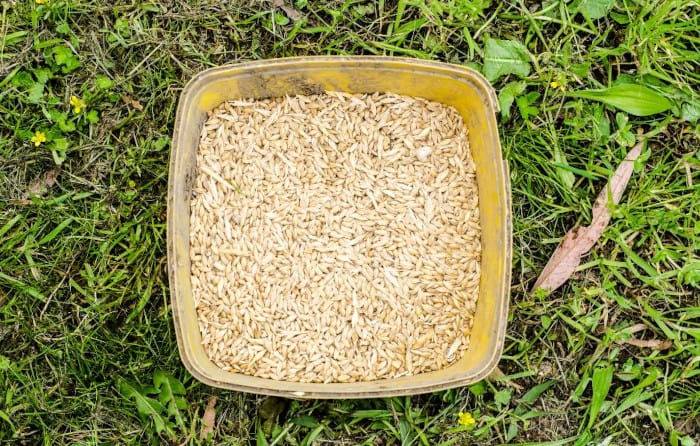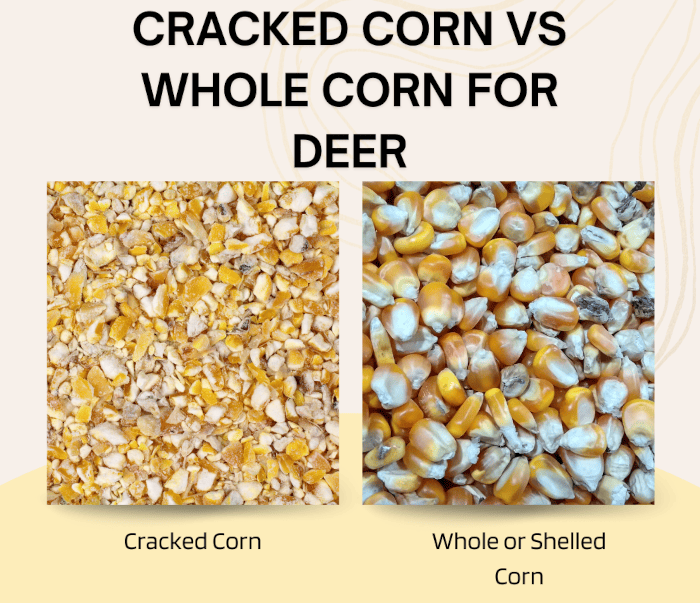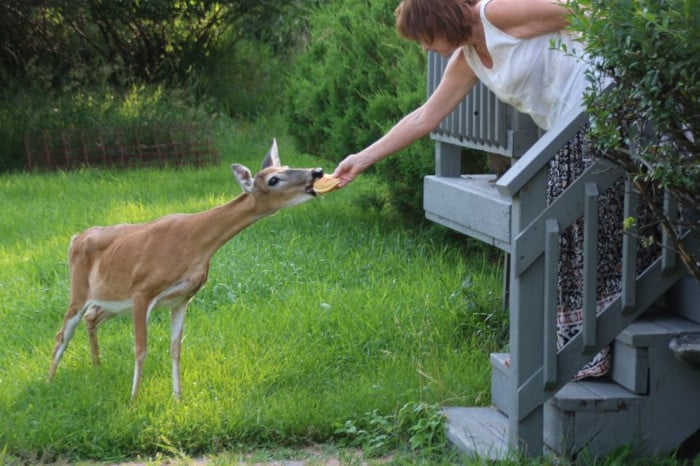Visit any deer hunting forum, and you’ll probably see several debates about over how high should a deer feeder be off the ground. Some hunters say that the feeder should be mounted as high as possible to make it more difficult for varmints and pests (like squirrels) to reach the food, while others believe that a lower height makes it easier for deer to feed. So, which is right? And what are the benefits and drawbacks of each? In this blog post, we’ll take a look at the pros and cons of each approach so you can make an informed decision about how high to hang your deer feeder.
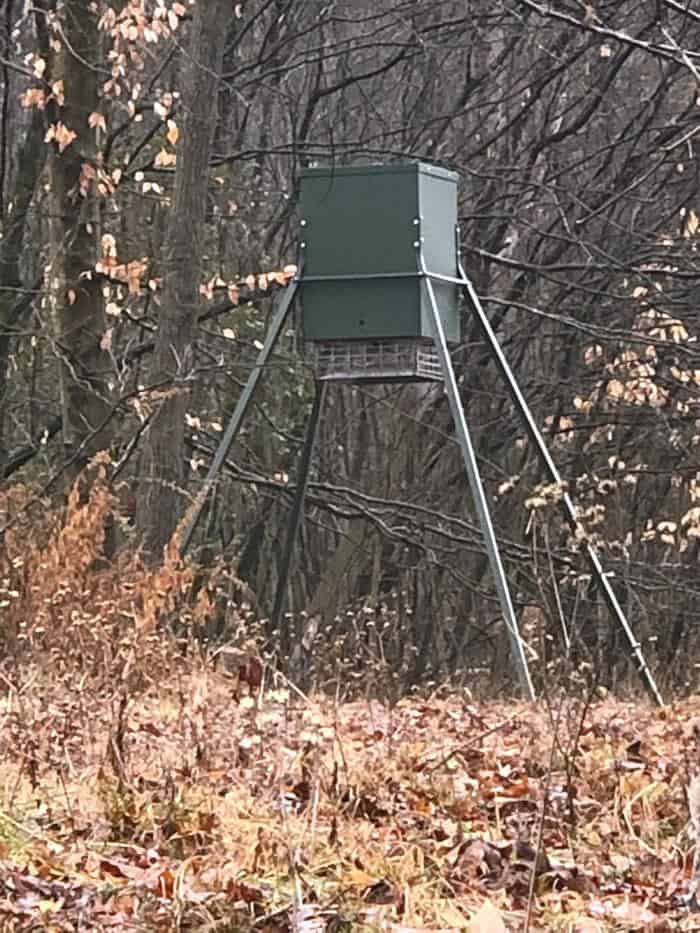
Why is Deer Feeder Height Important?
The height that a deer feeder is mounted can potentially impact several aspects of feeder management and feeder effectiveness. Here are a few factors to consider:
- Feeder Height in Relation to Ease of Feeder Refill
- Efficiency of the Feeder in Relation to the Height
- Feeder Damage by Animals Trying to Access the Feed in the Feed Hopper or Barrel
Let me dive a little deeper into each one of those points:
Feeder Height in Relation to Ease of Feeder Refill
The higher the feeder is located off the ground, the potentially more difficult it can be for a hunter to refill the feeder. Obviously, several factors come into play in this scenario, including the type of feeder (handing feeder, tripod feeder, gravity feeder, etc.), the feed capacity size of the feed hopper or barrel, and how often the feeder has to be refilled.
For example, a tripod feeder may require the owner/hunter to use a ladder to access the hopper for refilling. Hanging feeders are usually mounted via a cable, so I find those easier to refill than a tall tripod feeder or a gravity feeder mounted several feet off the ground.
Quick story to illustrate my point: Several years ago, I had issues with an average-sized black bear damaging one of my tripod feeders when attempting to get to the deer feed being stored in the feeder. So, I decided to spend the money and upgrade to a taller and more heavy-duty tripod feeder. When I took the feeder out to the leased property for set-up, I also took a standard step ladder with me for use in filling up the new feeder.
Once the new tripod feeder was set up, I realized that I had failed to consider the height of the new taller feeder and my standard step ladder was not tall enough to work with the taller feeder height safely. So I bought a new multi-position combination ladder and had to return to the feeder a few days later to fill it. The moral of that story: taller is great, but you have to consider the height for feeder management.
Effectiveness of the Feeder in Relation to the Height
I find that mounting a feeder higher than average is helpful as it can (but not always) help deter pest species like squirrels and raccoons from raiding the feeder. Keep in mind that it’s nearly impossible to completely discourage squirrels and raccoons from trying to raid a feeder. Still, the increased height (along with some other preventative steps like a varmint guard) can offer some deterrence. Mounting a feeder so the feed is dispensed 3 feet off the ground makes for easy pickings for a determined squirrel or raccoon.
Tripod-based feeders are usually built with a fixed (as in non-adjustable height), so you don’t have many options to change the height on a tripod feeder. However, hanging feeders are a different story, and the height can usually be adjusted. In addition, some gravity-based feeders offer height adjustment, but it depends on the specific style and design.

I also find that deer seem less skittish around feeders mounted higher off the ground than models mounted at their eye level. This is especially applicable to tripod-based feeders that make loud noises when the feeder activates. That activation noise can scare deer away if the feeder is mounted at the deer eye level. Mounting them higher seems to disturb the deer less when they activate.
However, I don’t find that the higher is better approach is applicable with gravity-based feeders that don’t have any moving parts or make any noise when the feed is dispersed.
Feeder Damage by Animals Trying to Access the Feed in the Feed Hopper or Barrel
I’ve somewhat already alluded to this issue above, but certain animal species may attempt to break into the feed storage area of a feeder trying to access the stored feed. Usually, when this happens, the feeder incurs some damage. The amount of damage is somewhat tied to the animal species. Squirrels and raccoons may chew holes in the hopper, but the larger animals like cows, hogs, and bears do the most damage.
However, moving the feeder to a higher point off the ground won’t solve all those animal issues. For example, no matter what steps you take or how high the feeder is mounted, a determined squirrel will find a way to get to the feeder (just like they find a way to get to a bird feeder). On the other hand, raccoons are heavier than squirrels and less acrobatic, so moving a feeder higher off the ground may offer a decent form of deterrence (depending on the feeder type).
Wild pigs (also called wild hogs) may try to push a tripod-style feeder over to access the feed and will damage the feeder trying to get into the feed storage. If you have a feeder in an area with cows, they may also try to push a tripod-style feeder over and break into the feed hopper.
All those situations are potentially unpleasant for the feeder owner, but the real problem animal species are black bears.
Bears are the Real Problem
Over the years, I’ve had all different types of deer feeder units and styles that were damaged by several different animal species. However, no animal species I’ve dealt with so far does as much damage to a feeder as a black bear.
If a black bear takes a liking to a deer feeder ad makes up its mind to break into the feeder, it’s probably game over for that feeder. Even a small Black Bear will absolutely destroy a deer feeder to gain access to the feed. And, even worse, may periodically return to that feeder location later and destroy the replacement feeder that you set up.
I have some pics of a few of my feeders destroyed by black bears, and I’ll try to find them and post them on this page as examples.
If I have a feeder that a black bear hits, here’s what I usually do:
Knowing that they will usually return to that deer feeder again, I switch the feeder at that location over to a hanging deer feeder. I mount the feeder to a cable suspended between two trees, at least 25 feet apart. The feeder is placed in the middle of the two trees and mounted at least 10 feet off the ground. The cable is too small for a bear to climb, and the feeder is mounted far enough from a tree to stop a bear from jumping from the tree onto the feeder. Being mounted 10-12 feet high is usually high enough to prevent a Black bear from reaching it from the ground.
While this feeder set-up is a pain in the butt to configure, I’ve yet to have a bear successfully breach a feeder mounted in this position. Due to the amount of work involved in this anti-bear feeder configuration, I generally only deploy this set-up after a bear has destroyed an existing feeder. In addition to the work involved in this configuration, refilling the feeder is also a bit of a challenge.
To be clear, I can’t take credit for this bear-resistant feeder concept as I saw it on a hunting forum a few years back and decided to give it a try.
However, I’d much rather take these steps than keep replacing feeders.
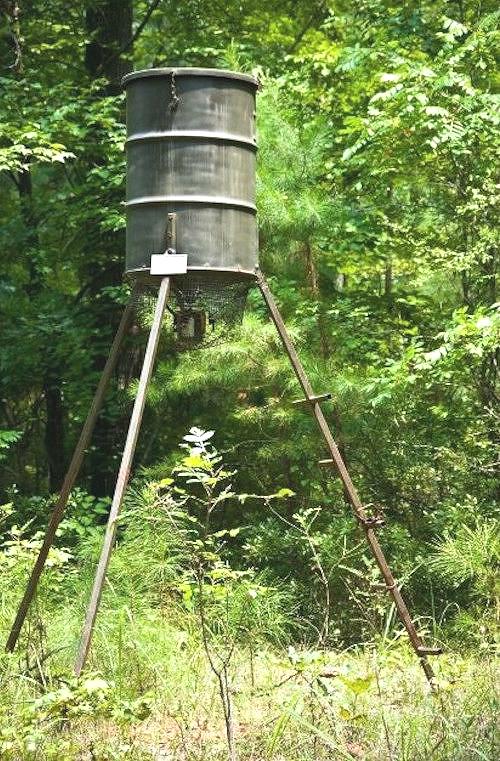
What’s the Best Deer Feeder Height?
That’s a difficult question to answer for several reasons:
While several feeder manufacturers offer general guidelines for feeder installation, there is not a universally accepted or universally recommended feeder height rule or recommendation.
As mentioned before, you may have or own a feeder style or type that has a fixed height, so it can’t be adjusted. The factory design or factory-built specifications are the only height available.
There isn’t a one-size-fits-all deer feeder that works in every possible feeding scenario. Deer feeder set-ups vary across the United States based on:
- Land typography
- Land type
- Weather
- Specific needs
- Feeder mission (For example, are you using the feeder as a hunting location or a means to keep deer around one spot).
- The different species competing for the feeder food (for example, you may not have Black Bears in your area).
- The different feeder styles (tripod, gravity-based, hanging feeders, etc.)
All those different factors make a one-size-fits-all recommended feeder height virtually impossible.
If possible, I prefer to mount my feeders at least 6 feet off the ground (or higher). I find the 6-foot minimum or higher to work best for my needs. But, again, that’s just my personal preference, so don’t take it as gospel.
Hopefully, this information helped provide some context about the ideal feeder height question.
